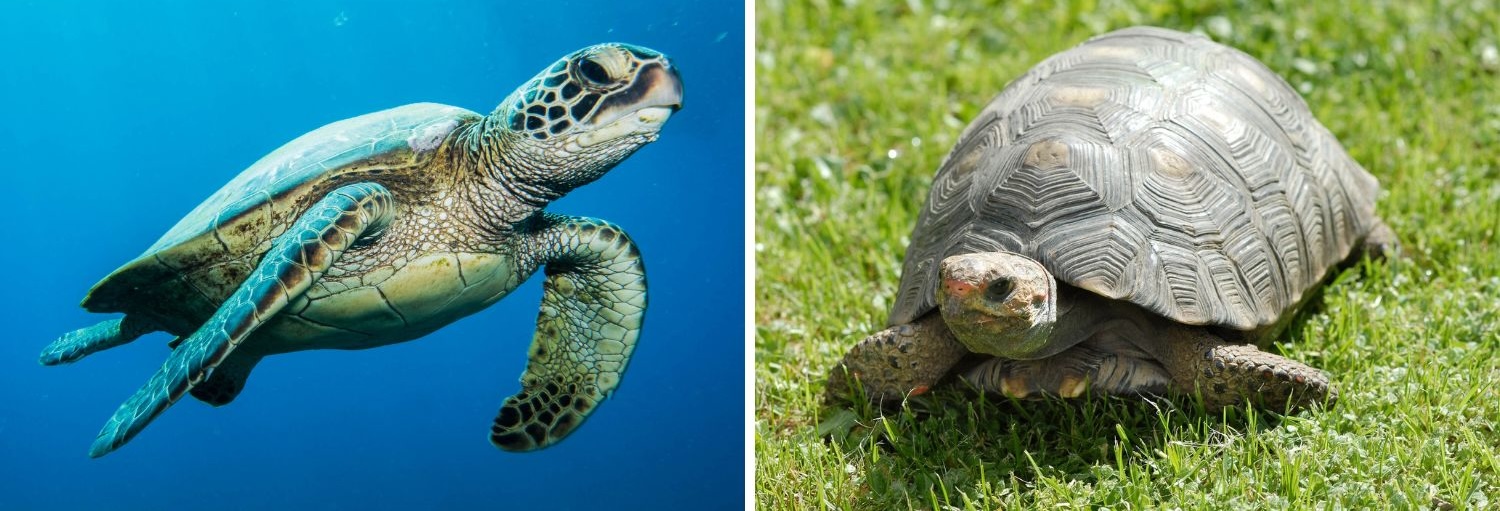
Turtles and tortoises are both reptiles from the order Testudines, and while they look similar at first glance, there are some key differences between them—especially when it comes to habitat, behavior, and body structure.
Turtles: Aquatic Adventurers
- Habitat: Most turtles spend a lot of their lives in water—whether it’s freshwater ponds, rivers, or the ocean.
- Feet: Turtles have webbed feet or flippers (like sea turtles) for swimming.
- Shell Shape: Their shells are generally flatter and more streamlined to help them glide through the water.
- Diet: Many turtles are omnivores, eating aquatic plants, insects, and small animals.
- Examples: Painted turtle, red-eared slider, green sea turtle.
Tortoises: Land Lovers
- Habitat: Tortoises are strictly land-dwellers. They don’t swim and can even drown in deep water.
- Feet: They have stumpy, elephant-like legs built for walking on dry land.
- Shell Shape: Their shells are domed and heavy, offering extra protection from predators.
- Diet: Most tortoises are herbivores, munching on grasses, leaves, and fruits.
- Examples: Galápagos tortoise, African spurred tortoise, Russian tortoise.
Key Differences at a Glance
| Feature | Turtle | Tortoise |
|---|---|---|
| Habitat | Mostly water | Land |
| Feet | Webbed or flippers | Short, sturdy legs |
| Shell Shape | Flat and streamlined | High-domed and heavy |
| Diet | Omnivores | Mostly herbivores |
| Swimming | Excellent swimmers | Poor swimmers |
Fun Fact
All tortoises are turtles (in the scientific sense), but not all turtles are tortoises! “Turtle” is a broader term, especially in North America.
Disclaimer: This blog post is for edutainment purposes only and may not be entirely accurate.






